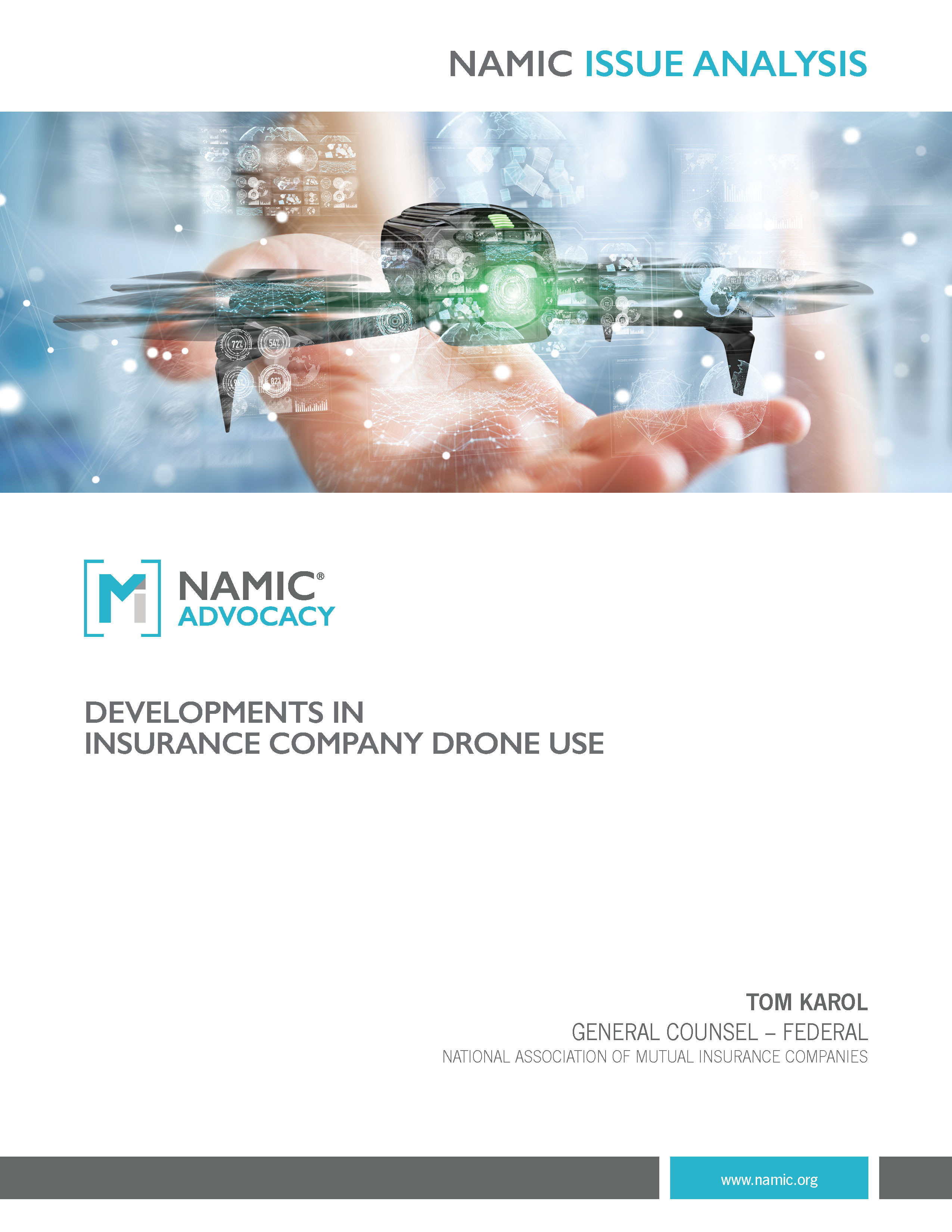Our Positions | Drones/Unmanned Aerial Systems
As the development of commercial uses for unmanned aircraft systems, or UAS, accelerates, more and more sectors are contemplating their use, including the insurance industry. Small UAS have the potential to be a critical tool for promoting safety and efficiency, and to reduce environmental impact in numerous commercial contexts, including claims management and underwriting. UAS could also allow insurers to provide safer and more economical insurance services and will help play a critical role in disaster response and recovery efforts. The FAA itself has estimated that by 2020, insurance will be one the four top markets for unmanned aerial systems.
In 2012, Congress directed the Federal Aviation Administration to integrate civil UAS into the national airspace. The FAA’s latest rules governing the future commercial use of drones went into effect in August 2016 and it is fully expected that the use of this emerging technology by insurers and policyholders will rapidly expand. Based on comments and feedback from NAMIC and others, the FAA’s finalized regulations eased some of the regulatory burdens that had previously been in place for those drone operators. However, the rules still prohibit certain commercial drone operations such as those over people or beyond light-of-sight.
Issue Analysis Papers
Developments in Insurance Company Drone Use (PDF)
This third white paper in the continuing series provides a snapshot of the way insurance companies use drones to provide insurance services. This overview also aims to give insurers an understanding of the developments that provide opportunities for, and obstacles to, drone use. The paper concludes with a review of the important advocacy efforts that have been undertaken to expand those opportunities and overcome the obstacles.
(Published 12/10/18)
NAMIC Position
In April 2017, NAMIC became the first association in Washington to call for Congress to restore property owners’ rights of private airspace from drones by creating a national airspace level at 200-feet in altitude. As pointed out in NAMIC’s recent whitepaper titled “Unmanned Aircraft: Defining Private Airspace,” despite multiple Supreme Court decisions clearly recognizing that national airspace does not include super-adjacent airspace over private property, the FAA has claimed overbroad jurisdiction when it comes to the regulation of UAS, which could ultimately curb the development and legitimate use of the technology.
NAMIC has developed a position of eminence in the intersection of drones and insurance, and will work to ensure our members have the regulatory freedom to most effectively use and insure UAS. To assist in this effort, NAMIC has begun talking to other heavy users of UAS, such as Amazon, the American Farm Bureau, the National Rural Electric Cooperative Association, the Drone Media Coalition, and Airmap, to form a coalition centered around restoring the rights to private airspace. NAMIC’s work is already bearing fruit, with both members of the House and Senate seeking our support on legislation designed to create a 200-foot threshold for private airspace. The association will work with both chambers in seeking to insert these policies in legislation designed to reauthorize the FAA.


